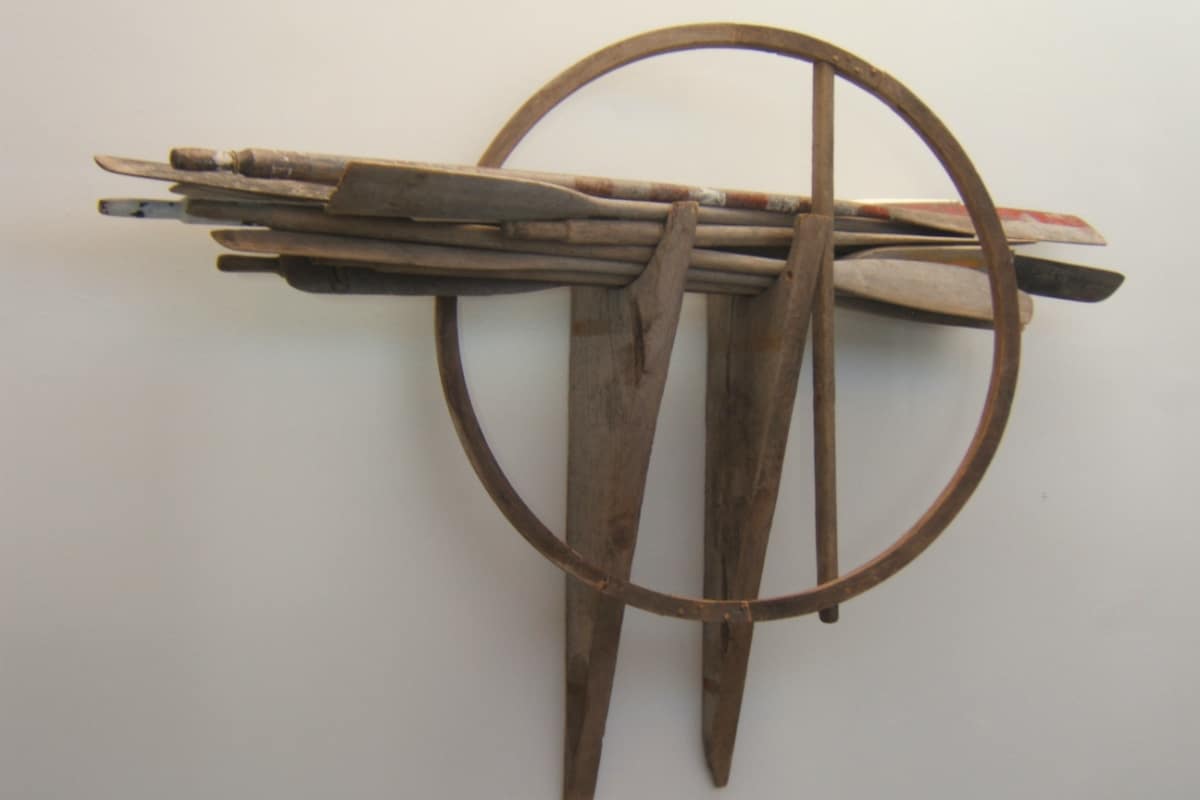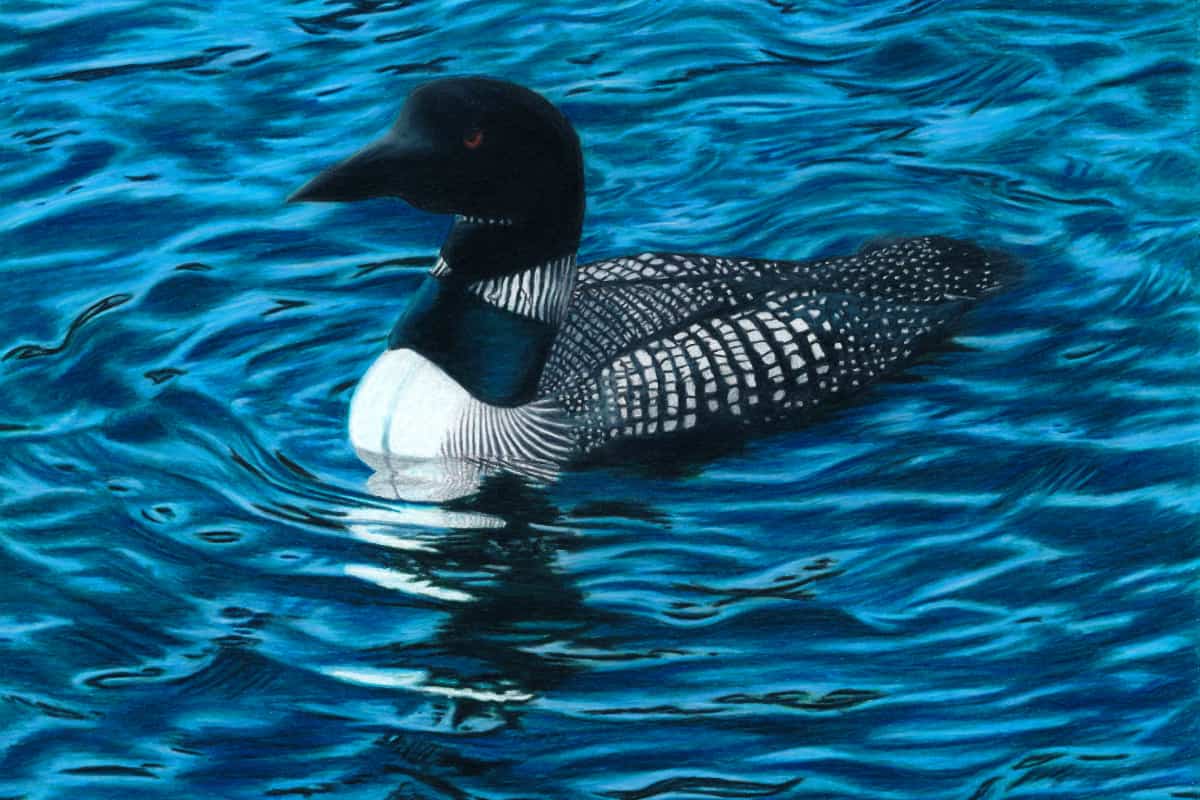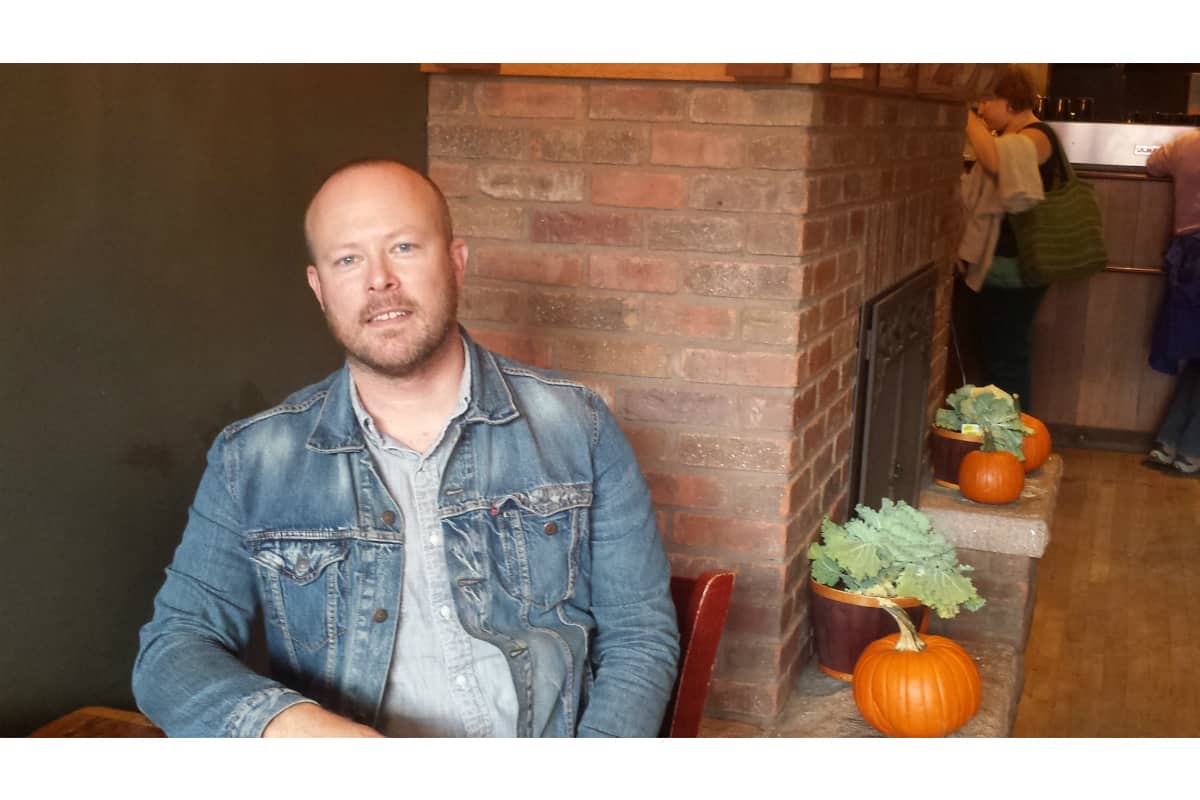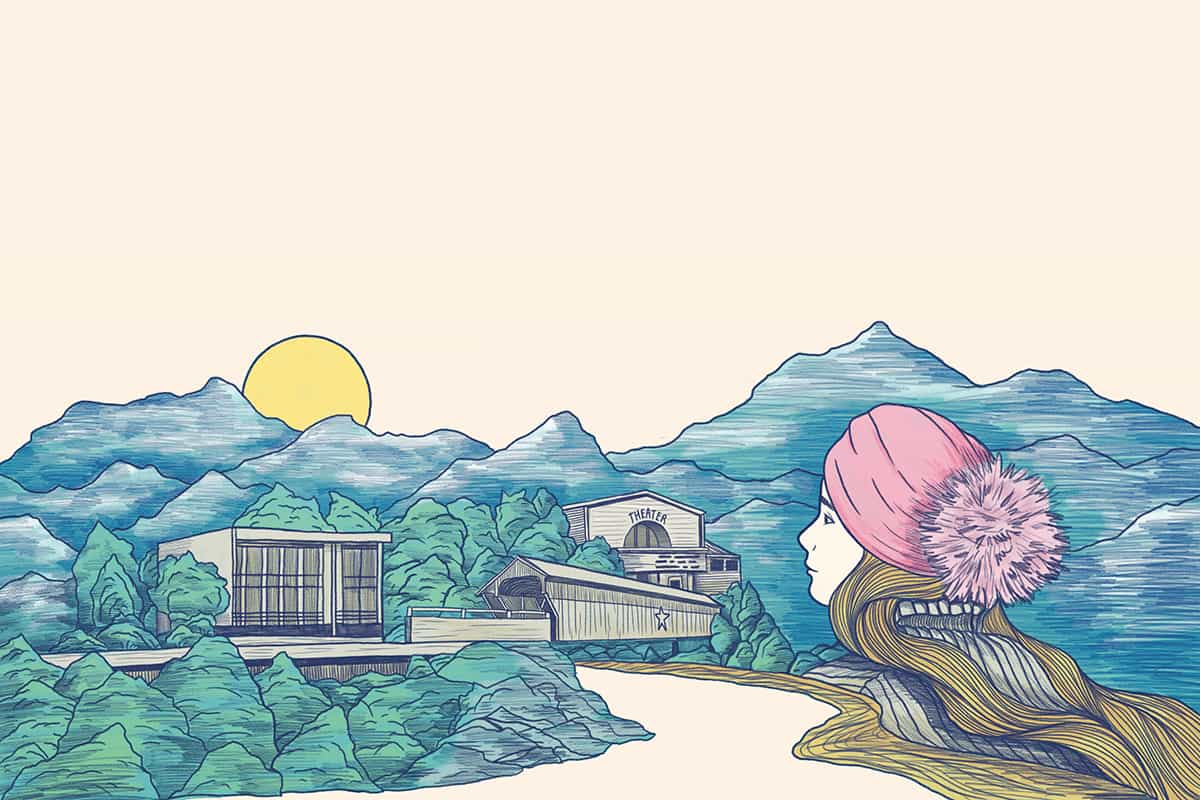Vermont artist Paul Bowen has spent 40 years collecting materials on Cape Cod to convert into unique and intriguing creations.
Paul Bowen and his wife moved to southern Vermont a dozen years ago, but he never really left the beaches of Cape Cod behind. That’s because he brought so much from those beaches with him — worn planks, rusty nails and marine detritus he collected after it washed ashore. Those found objects, now stored in a garage and top floor of an historic barn where he lives in Williamsville, Vermont, still serve as the foundation for most of his work.
Whether large-scale wall hangings or smaller, intricate figures, Bowen’s sculpture merges sharp, geometric, abstract shapes with the rustic imperfections of wood shaped by sea and sand. BigTown Gallery is hosting an exhibition of his work at each of its Vermont locations, in Vergennes and Rochester, through December 2nd.
Bowen was born and raised in a seaside town in Wales, United Kingdom, and moved permanently to the United States in 1977 when he was given a fellowship at the Fine Arts Work Center in Provincetown, Massachusetts. He lived across the street from the water. “I could go to the beach two times a day and collect materials,” he recalls.
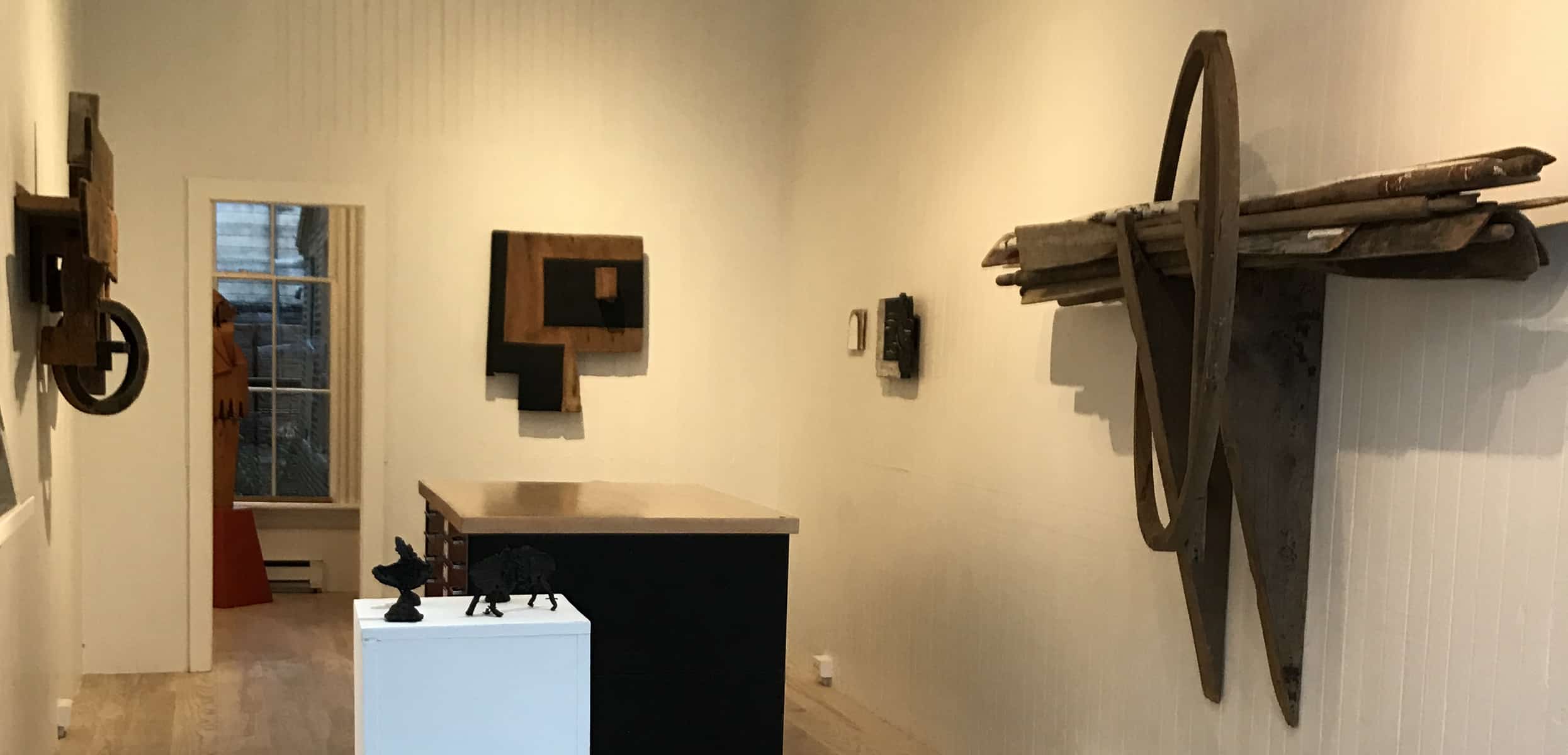
He still gathers there every summer, when he returns to teach sculpture classes at the Fine Arts center and the nearby Truro Center for the Arts at Castle Hill. One of his favorite recoveries is the beat-up fishing boxes where fishermen pack their catch on ice. Bowen loves the big but very thin boards, many no more than ¼ to 3/8 of an inch thick. “It’s a very beautiful material,” he says. “It has a kind of honey color from being in seawater.”
Bowen’s collections fall into categories: One is all white-painted wood; another is wood covered in black tar. It’s his version of a painter’s palette. “I don’t throw anything away,” Bowen says. “I need bent nails. I need rusty nails. I even save old staples.”
For years, he has kept a large stash of wood rusted by metal and industrial waste, the remnants of Provincetown’s commercial waterfront, as it sat wedged in the sand. Bowen has hung gallery shows featuring only his rust-stained wood, he says. Now, he’s running low on his stock, so he’s filling buckets of water with rusty nails and wood to get it to pick up the right color.
Life in a quintessential Vermont town, in an old house next to a covered bridge, has provided Bowen with new materials and new fodder. Wood piles up at the foot of the bridge after a big spring snow melt or flooding from major storms.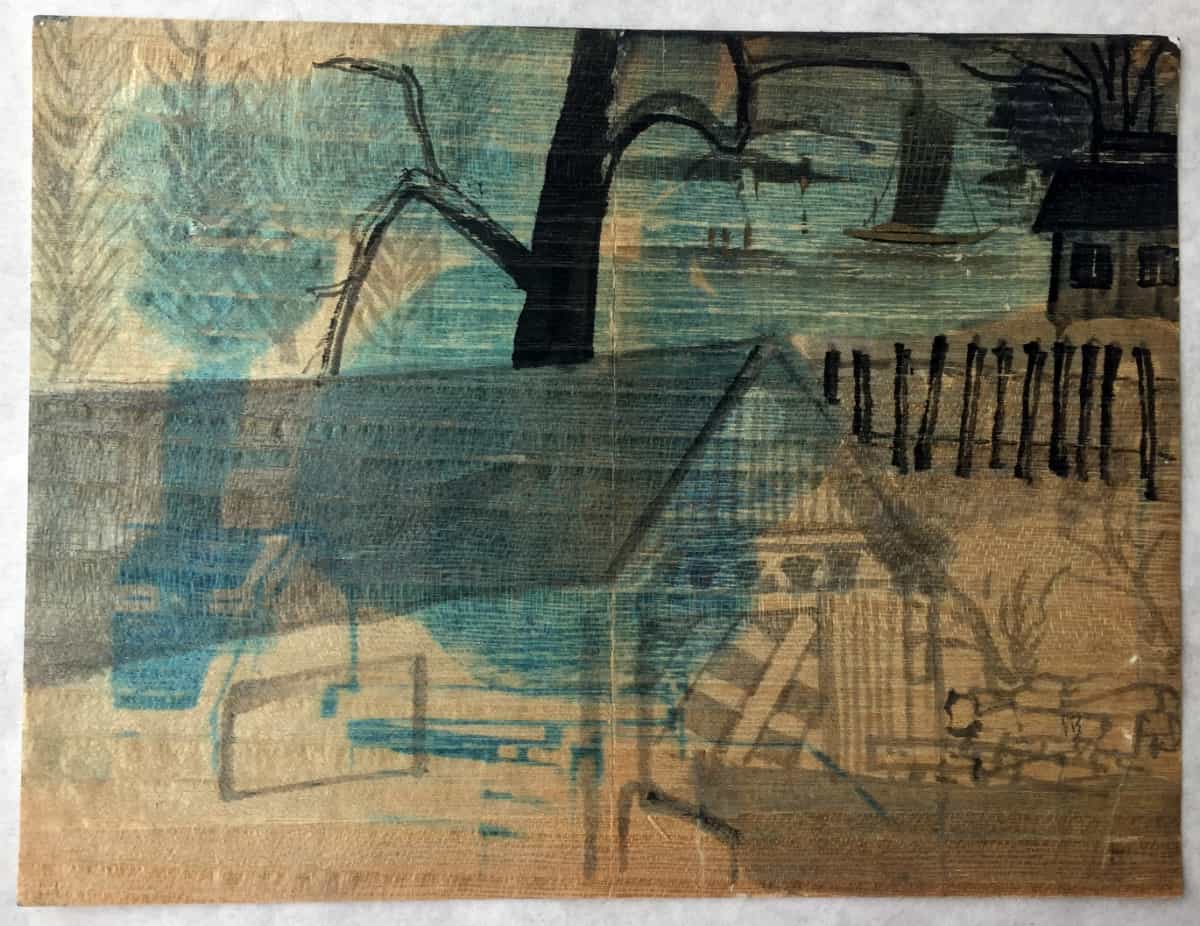
A series of drawings, several of them in the BigTown show, juxtaposes images of covered bridges onto old maps and other landscapes, even a set of antique greeting cards he found. Bowen uses his own ink, made from a black walnut tree in his yard or from the squid that he catches with his summer students in Provincetown.
The covered bridge is to Vermont what the medieval cathedral is to Wales, Bowen points out. Both are iconic to their surroundings. “It’s just a matter of looking and seeing what’s there,” Bowen says, “and learning from the environment you’re in.”

